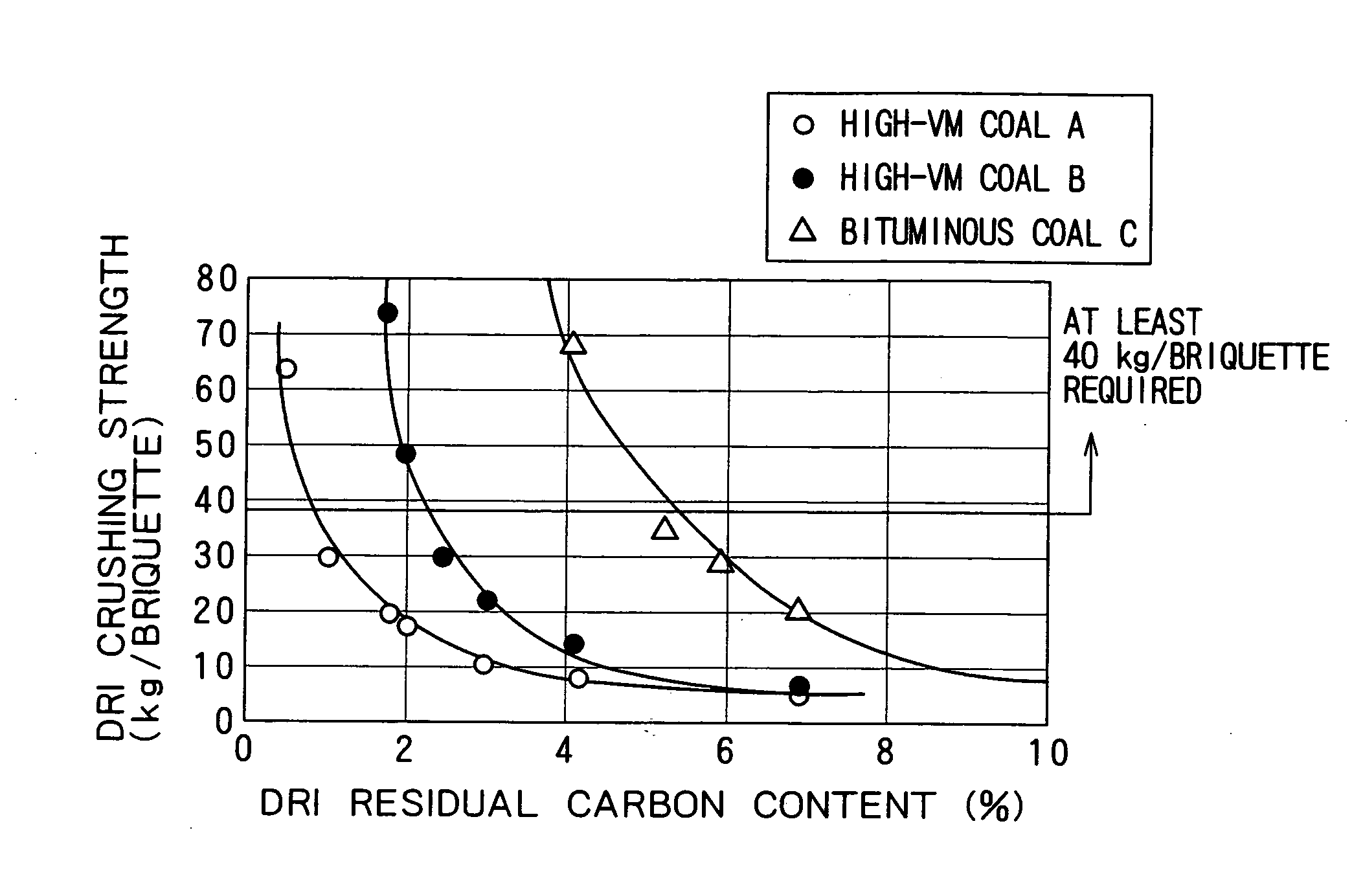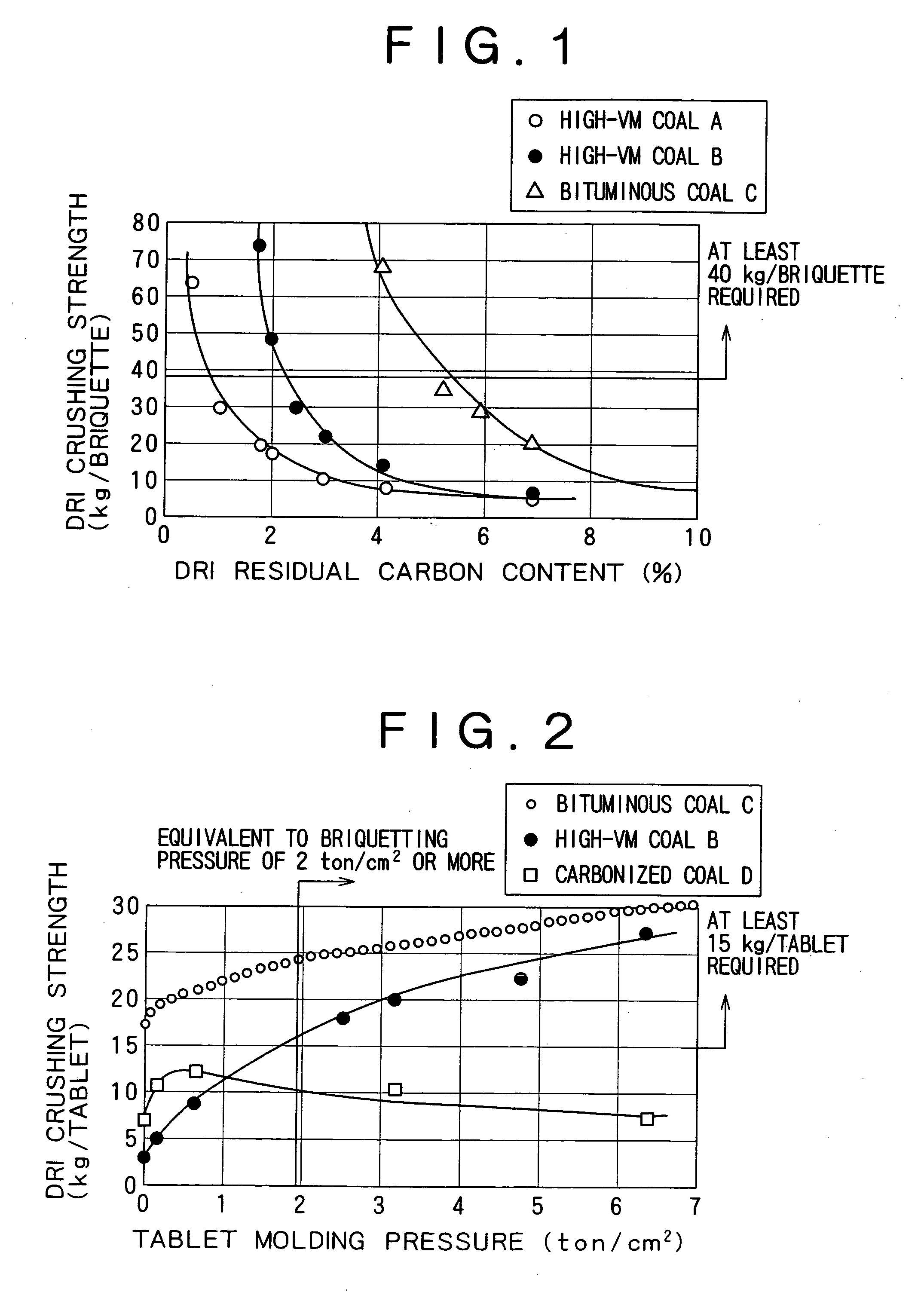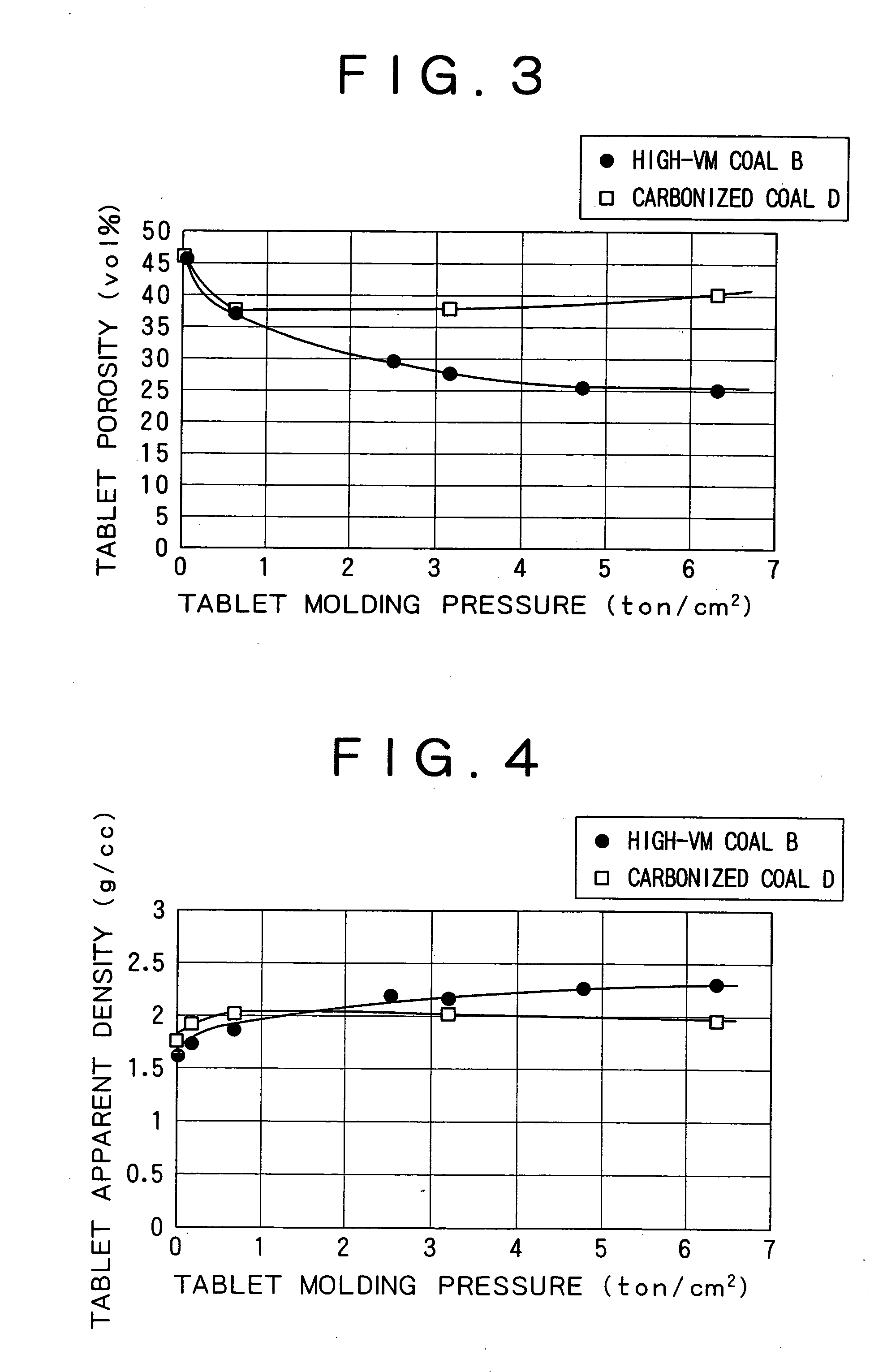Process for producing reduced matal and agglomerate with carbonaceous material incorporated therein
a carbonaceous material and agglomerate technology, applied in blast furnace details, blast furnace components, blast furnaces, etc., can solve the problems of high cost, large natural gas supply, low thermal conductivity and reduction rate, etc., and achieve high crushing strength and reduce porosity. , the effect of promoting heat transfer
- Summary
- Abstract
- Description
- Claims
- Application Information
AI Technical Summary
Benefits of technology
Problems solved by technology
Method used
Image
Examples
example 1
[0051] Carbonaceous materials having compositions shown in Table 1 below (a high-VM coal A, a high-VM coal B, and a bituminous coal C) were pulverized so that about 80% or more of the particles had a size of 200 mesh or less. Also, iron ore was ground to a Blaine fineness of about 1,500 cm2 / g. Each carbonaceous material and the iron ore were mixed in varying ratios to provide varying residual carbon contents in direct reduced iron (namely, DRI residual carbon contents). The mixtures were compressed at 2.5 t / cm (per roll length) with a test briquetting machine including pillow-shaped pockets and having a roll diameter of 228 mm and a roll length (barrel length) of 70 mm to form pillow-shaped agglomerates (briquettes) with the carbonaceous materials incorporated therein. The agglomerates were oval in cross section, and had a length of 35 mm, a width of 25 mm, a maximum thickness of 13 mm, and a volume of 6 cm3.
TABLE 1Type of carbonaceous materialCompo-High-High-sitionVMVMBituminousC...
example 2
[0061] The high-VM coal B and the carbonized coal D shown in Example 1 were used. The high-VM coal B was used to form briquettes with the carbonaceous material incorporated therein that had volumes of 6 cm3 at 2.5 t / cm and 6.5 t / cm. These briquettes were subjected to high-temperature reduction by placing them in a rotary hearth furnace at about 1,300° C. for about nine minutes in a nitrogen atmosphere. FIG. 5 is a graph showing the relationship between the DRI residual carbon content (% by mass) and the DRI crushing strength (kg / briquette). FIG. 5 shows that higher DRI crushing strength was achieved at the higher briquetting pressure, namely 6.5 t / cm, in the case of the same residual carbon content, which contributes to the reduction of unreduced metal oxide, namely iron oxide, in a melting furnace in a downstream step. This means that a reduced iron having high crushing strength can be produced with high-VM coal by increasing the briquetting pressure even if the content of the high...
example 3
[0064] Briquettes with carbonaceous materials having a fluidity of zero incorporated therein were prepared and reduced in a rotary hearth furnace. Table 2 below shows the relationship between the content of oxide particles having a size of 10 μm or less in iron oxide and the crushing strength of the reduced iron and the ratio of fines of the reduced iron smaller than 6 mm. This table also shows the types of carbonaceous materials used (see Table 1 above), the contents of the carbonaceous materials and iron ore, and the metallization rate and residual carbon content of the reduced iron. The briquettes with the carbonaceous materials incorporated therein were reduced in the rotary hearth furnace under the same conditions as in Examples 1 and 2 above, namely at about 1,300° C. in a nitrogen atmosphere for about nine minutes. The carbonaceous materials used had a fluidity of zero.
TABLE 2ComparativeExample 1Example 2ExampleContent of fine particles having6.813.313.3size of 10 μm or les...
PUM
| Property | Measurement | Unit |
|---|---|---|
| porosity | aaaaa | aaaaa |
| particle size | aaaaa | aaaaa |
| temperature | aaaaa | aaaaa |
Abstract
Description
Claims
Application Information
 Login to View More
Login to View More - R&D
- Intellectual Property
- Life Sciences
- Materials
- Tech Scout
- Unparalleled Data Quality
- Higher Quality Content
- 60% Fewer Hallucinations
Browse by: Latest US Patents, China's latest patents, Technical Efficacy Thesaurus, Application Domain, Technology Topic, Popular Technical Reports.
© 2025 PatSnap. All rights reserved.Legal|Privacy policy|Modern Slavery Act Transparency Statement|Sitemap|About US| Contact US: help@patsnap.com



